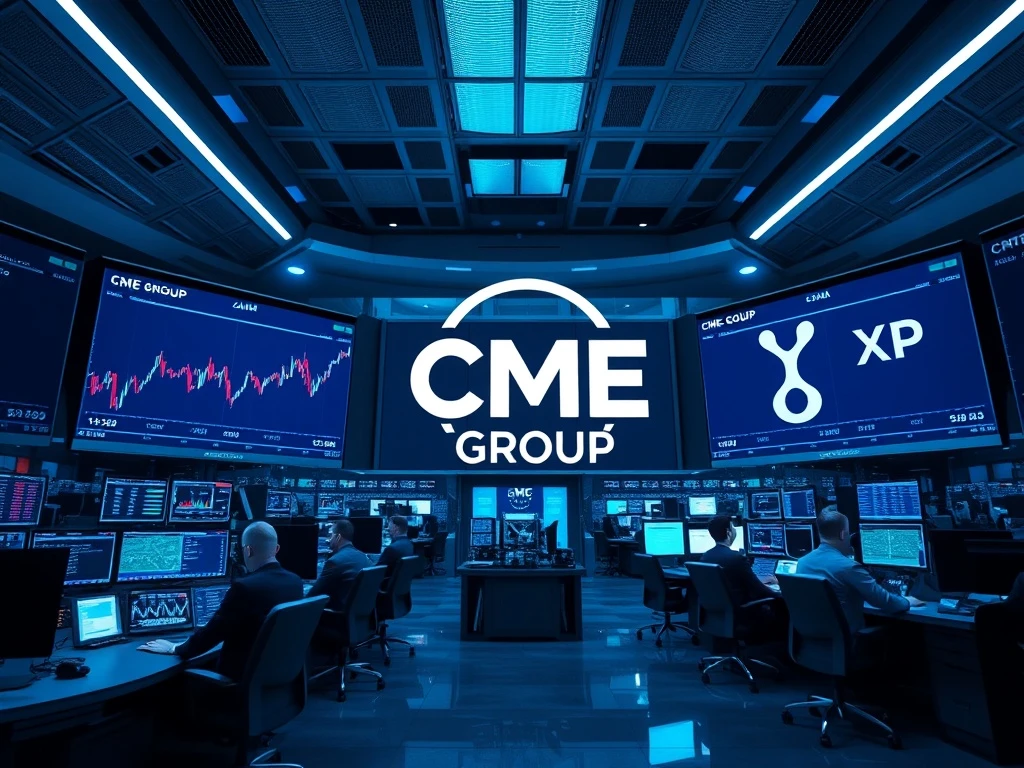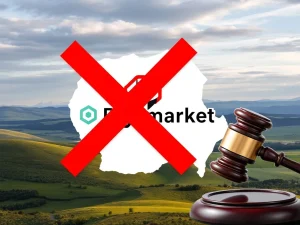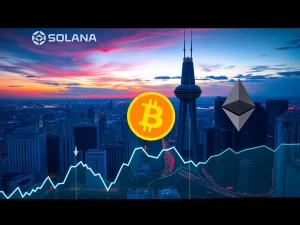CME Solana XRP Options: Unlocking Massive Growth in Regulated Crypto Derivatives

The cryptocurrency market is witnessing a significant evolution. Major institutions are increasingly embracing digital assets. Now, the CME Group, a global leader in derivatives, is set to launch options on Solana (SOL) and XRP (XRP) futures. This strategic move signals a maturing market. It offers sophisticated traders new avenues for risk management and speculation. This development further solidifies the integration of altcoins into mainstream finance. Investors keen on advanced trading instruments will find these new offerings particularly compelling.
CME Solana XRP Options: Expanding the Derivative Landscape
On October 13, the Chicago Mercantile Exchange Group (CME) will expand its cryptocurrency product suite. It plans to introduce CME Solana XRP options. This marks a pivotal moment. It extends regulated crypto derivatives beyond Bitcoin (BTC) and Ether (ETH) for the first time. This expansion follows robust trading activity in SOL and XRP futures contracts. Both launched earlier this year. Giovanni Vicioso, CME’s global head of cryptocurrency products, highlighted the “significant growth and increasing liquidity” in these markets. This new offering caters to a broad spectrum of participants. It ranges from large institutions to active individual traders. The new derivative products are subject to regulatory approval.
Understanding Futures and Options
For those new to derivatives, understanding the basics is crucial. These instruments offer distinct trading opportunities.
- Futures contracts obligate parties to buy or sell an asset. This transaction occurs at a predetermined price and on a specific future date.
- Options contracts provide the holder with the right, but not the obligation, to buy or sell an underlying asset. This also happens at a set price by a certain date.
The CME’s new options will cover standard and micro-sized SOL and XRP futures. These options will feature daily, monthly, and quarterly expiries. These instruments allow traders to hedge against price volatility or speculate on future price movements. They offer flexible strategies for market participation.
The Rise of Regulated Crypto Derivatives Beyond Bitcoin and Ether
The journey of regulated crypto derivatives in the US began in December 2017. At that time, Cboe and CME Group launched Bitcoin futures. The Commodity Futures Trading Commission (CFTC) oversaw these initial products. A key milestone followed in 2021. CME introduced Ether futures, later adding micro contracts sized at 0.1 ETH. Until recently, regulated offerings largely remained limited to these two dominant cryptocurrencies. However, a growing demand for regulated crypto products has emerged. This demand stems from increased regulatory clarity. Measures like the GENIUS Act and a more pro-crypto White House stance have contributed. This shift indicates a broader acceptance and institutional comfort with digital assets.
Driving Demand for Solana Futures and XRP Futures
The decision to launch options on Solana and XRP futures is not arbitrary. It reflects substantial market interest and performance. Since its launch in March, over 540,000 Solana futures contracts have traded. This represents $22.3 billion in notional value. August saw record activity, with 9,000 contracts traded daily. Similarly, XRP futures have gained significant traction. Over 370,000 contracts have traded since their May launch. This totals $16.2 billion in notional value. August also recorded a peak open interest of $942 million for XRP futures. These figures underscore the robust demand for these specific altcoin derivatives. This robust activity demonstrates strong market confidence and liquidity.
Bolstering Market Integrity with Regulated Crypto Products
The expansion of CME’s offerings reinforces the growing trend of institutional adoption. Regulated platforms provide a critical layer of security and transparency. They attract more traditional investors. This structured environment mitigates risks associated with unregulated markets. Consequently, the availability of these regulated crypto products enhances market integrity. It fosters greater trust among participants. The CME Group’s move signifies a commitment to meeting evolving market needs. It does so within a compliant framework. This approach is vital for the long-term growth and stability of the crypto ecosystem. It also promotes fairer trading practices.
US Market Demand Fuels Innovation
The US market for crypto derivatives is experiencing a surge in regulated offerings. Traditional exchanges and fintech companies are responding. For instance, Coinbase introduced Solana (SOL) futures contracts earlier this year. These included standard and “nano” sizes. Coinbase later acquired the options exchange Deribit, further expanding its reach. Kraken also launched its derivatives arm in the US in July. Robinhood similarly rolled out micro futures contracts for Bitcoin, Solana, and XRP. This widespread innovation addresses the strong investor appetite. Global crypto derivatives open interest remains near $4 billion. This indicates a vibrant and expanding market, ready for more advanced tools.
What This Means for Altcoin Adoption and Future Growth
The introduction of CME Solana XRP options marks a significant milestone. It validates Solana and XRP as major players in the digital asset space. This move will likely increase liquidity and price discovery for both altcoins. It provides new tools for institutions to manage their exposure. Furthermore, it paves the way for other altcoins to potentially gain regulated derivative products. This institutional backing and regulated access are crucial for broader altcoin adoption. It helps bridge the gap between traditional finance and the crypto world. Ultimately, this development suggests a bright future for the regulated crypto market. It offers more diverse and sophisticated trading opportunities for all participants.








